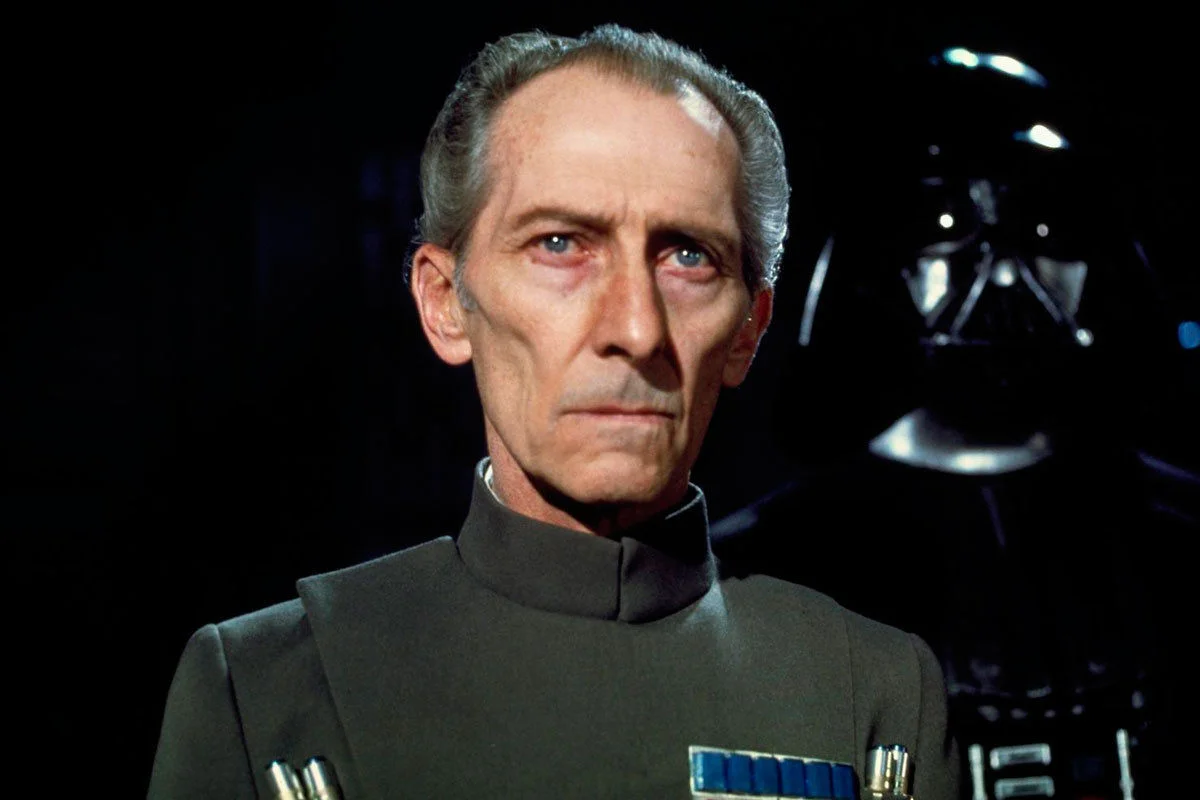Triumph of the Whills
How Rogue One: A Star Wars Story finally brought the Whills to the screen after flirting with the concept for 43 years.
Like just about everybody else who has seen Rogue One, one of my favourite parts of the movie is warrior-monk Chirrut Îmwe.
Not only is he played by one of the coolest actors alive, Donnie Yen, but his backstory as one of the Guardians of the Whills – a religious order active in the holy city of Jedha, tasked with protecting the Temple of the Whills – is a huge addition to the saga’s lore.
Though their name has never before been uttered on screen, the concept of ‘the Whills’ goes back all the way to the very beginning of the saga’s development, in 1973, when George Lucas typed up two pages of notes that he called the Journal of the Whills.
“Originally, I was trying to have the story be told by somebody else; there was somebody watching this whole story and recording it, somebody probably wiser than the mortal players in the actual events,” Lucas said in Laurent Bouzereau’s Star Wars: The Annotated Screenplays.
“I eventually dropped this idea, and the concept behind the Whills turned into the Force. But the Whills became part of this massive amount of notes, quotes, background information that I used for the scripts; the stories were actually taken from the Journal of the Whills.”
Lucas elaborated on the concept a little further — and explained the significance of the name — in JW Rinzler’s The Making of Star Wars.
“Journal of the Whills came from the fact that you ‘will’ things to happen,” he said. “The introduction was meant to emphasise that whatever story followed came from a book.”
The use of a fictional in-universe text like the Journal of the Whills has quite a few precedents, but the most relevant is probably JRR Tolkien’s Red Book of Westmarch, a fictional manuscript said to be written by hobbits, from which Tolkien supposedly derived The Hobbit and The Lord of the Rings.
Similarly, each chapter of Frank Herbert’s first Dune novel opens with quotations from in-universe texts.
Lucas’ plan to use the Journal of the Whills as a framing device also brings to mind The Jungle Book, especially in light of Lucas’ reverence for Walt Disney.
Lucas’ initial two-page Journal of the Whills outline was, rather ambitiously, divided into two parts. A synopsis of the two-page document is included in JW Rinzler’s The Making of Star Wars.
“This is the story of Mace Windy, a revered Jedi-Bendu of Ophuchi, as related to us by C.J. Thorpe, padawan learner to the famed Jedi,” it begins.
‘C.J.’ is also referred to as ‘C.2.’, which stands for ‘Chuiee Two’. (Not only is there a phonetic resemblance to ‘Chewie’ there, but it’s not that far off ‘Chirrut’, either.)
At the age of 16, Chuiee enters the “exalted Intersystems Academy to train as a potential Jedi-Templer. It is here that I become padawan learner to the great Mace Windy … at that time, Warlord to the Chairman of the Alliance of Independent Systems … Some felt he was even more powerful than the Imperial leader of the Galactic Empire … Ironically, it was his own comrades’ fear … that led to his replacement … and expulsion from the royal forces.”
Chuiee begs to stay in the service after his master’s dismissal. Part II picks up the story, before trailing off: “It was four years later that our greatest adventure began. We were guardians on a shipment of fusion portables to Yavin, when we were summoned to the desolate second planet of Yoshiro by a mysterious courier from the Chairman of the Alliance.”
Lucas doesn’t mention the Journal of the Whills in the 10-page synopsis for Star Wars that would follow in May 1973, or the May 1974 rough draft or the July 1974 first draft (although “the force of others”, which also gets a shout-out in Rogue One, first appears in these drafts).
The Journal of the Whills re-appears in the January 1975 second draft, as a prologue.
“… And in the time of greatest despair there shall come a savior, and he shall be known as: THE SON OF THE SUNS.
Journal of the Whills, 3:127
By the January 1976 fourth draft, the Journal of the Whills is present only in the not-at-all-cumbersome title: Star Wars: The Adventures of Luke Starkiller as taken from the “Journal of the Whills” by George Lucas (Saga I).
Really rolls off the tongue, doesn’t it?
The Journal of the Whills doesn’t appear in the shooting script (or the sequels), but it is used as the prologue for Alan Dean Foster’s Star Wars novelisation, released in November 1976.
ANOTHER galaxy, another time.
The Old Republic was the Republic of legend, greater than distance or time. No need to note where it was or whence it came, only to know that… it was the Republic.
Once, under the wise rule of the Senate and the protection of the Jedi Knights, the Republic throve and grew. But as often happens when wealth and power pass beyond the admirable and attain the awesome, there appear those evil ones who have greed to match.
So it was with the Republic at its height. Like the greatest of trees, able to withstand any external attack, the Republic rotted from within though the danger was not visible from outside.
Aided and abetted by restless, power-hungry individuals within the government, and the massive organs of commerce, the ambitious Senator Palpatine caused himself to be elected President of the Republic. He promised to reunite the disaffected among the people and to restore the remembered glory of the Republic.
Once secure in office he declared himself Emperor, shutting himself away from the populace. Soon he was controlled by the very assistants and boot-lickers he had appointed to high office, and the cries of the people for justice did not reach his ears.
Having exterminated through treachery and deception the Jedi Knights, guardians of justice in the galaxy, the Imperial governors and bureaucrats prepared to institute a reign of terror among the disheartened worlds of the galaxy. Many used the imperial forces and the name of the increasingly isolated Emperor to further their own personal ambitions.
But a small number of systems rebelled at these new outrages. Declaring themselves opposed to the New Order they began the great battle to restore the Old Republic.
From the beginning they were vastly outnumbered by the systems held in thrall by the Emperor. In those first dark days it seemed certain the bright flame of resistance would be extinguished before it could cast the light of new truth across a galaxy of oppressed and beaten peoples…
From the First Saga
Journal of the Whills
According to Marcus Hearn’s The Cinema of George Lucas, Lucas kept the two-page Journal of the Whills outline on his desk when he began writing the prequel trilogy, hence the inclusion of Mace Windu and padawan learners in The Phantom Menace.
The ‘Whills’ themselves, however, didn’t turn up again until Revenge of the Sith. First, the rough draft had Yoda describe Qui-Gon Jinn as “one who has studied with the ancient order of the Whills”.
Then, two scenes in the script mentioned the Whills, although neither reference actually made it into the finished film.
First, in a scene that was never even shot, Yoda converses with the ghost of Qui-Gon, who explains that “the ability to defy oblivion” has been accomplished by a “Shaman of the Whills”, and that he, too, has learnt the secret to becoming one with the Force.
Yoda, recognising that he has been surpassed by Qui-Gon, then willingly becomes Qui-Gon’s apprentice.
A version of this scene, albeit one that doesn’t mention the “Shaman of the Whills”, exists in Matthew Stover’s Revenge of the Sith novelisation, and it’s brilliant – in it, Yoda comes to the conclusion that the Jedi Order has failed because he has become “too rigid, too arrogant to see that the old way is not the only way”, and it’s only then, after he has eaten humble pie, that Qui-Gon offers to teach him the secret to immortality.
It’s the perfect ending to Yoda, Qui-Gon and the Jedi Order’s story in the prequels and it’s a damn shame it was cut from the film.
The second mention of the Whills came shortly afterwards, when Yoda talks to Obi-Wan about his reunion with Qui-Gon and explains that Qui-Gon has learned “the secret of the Ancient Order of the Whills”.
Although that scene remained in the film, the mention of the Whills was cut, and they were once again denied their time in the spotlight.
A 2014 arc of The Clone Wars that depicted how Qui-Gon Jinn learned to become one with the Force seemed certain to make the Whills canon — but instead, the arc gave the credit for teaching Qui-Gon his new trick to a group of Force Priestesses, and the Whills were forgotten once more.
That, it seemed, was that – until our old buddy Alan Dean Foster stepped back into the fray, and included this prologue in his novelisation of The Force Awakens.
“First comes the day
Then comes the night.
After the darkness
Shines through the light.
The difference, they say,
Is only made right
By the resolving of gray
Through refined Jedi sight.”
–Journal of the Whills, 7:477
Whether Foster had any idea that Lucasfilm was going to introduce the Whills in Rogue One at that point is unclear (although it seems unlikely, given the lead time Foster would have needed to write the novelisation).
In retrospect, however, the mention of “refined Jedi sight” is perfect, given Chirrut’s apparent ability to ‘see’ through the Force.
Now, thanks to Rogue One, the Whills aren’t just a deep cut from script drafts and novelisations anymore — they’re officially canon, in the form of the Temple of the Whills and the Guardians of the Whills.
There are still some big questions to be answered, of course.
Who — or what — are the Whills? Is it just an ancient term for the Force, or does it refer to an actual group of people?
Were they the actual custodians of the Temple of the Whills, or was it just named after them?
What was being stored in the Temple, aside from Kyber crystals?
Could the Temple of the Whills have been home to the Journal of the Whills — and if so, where is the Journal now?
We don’t know the answers to any of these questions yet, although we do know that the Journal of the Whills, as conceived by Lucas, can’t be written until quite some time after Rogue One.
That’s because, according to Lucas himself in JW Rinzler’s The Making of Star Wars: Revenge of the Sith, the story of Star Wars is actually told to the Keeper of the Whills a full hundred years after the Battle of Endor.
And who tells the Keeper the story?
R2-D2, of course…
Force Material is a podcast exploring the secrets and source material of Star Wars with hosts Rohan Williams and Baz McAlister. Listen and subscribe on iTunes, Spotify, iHeartRadio, TuneIn, Stitcher, PlayerFM and Castro; stay in touch with us on Facebook, Twitter and Instagram; and support the show by browsing our range of shirts, hoodies, kids apparel, mugs and more at TeePublic.















